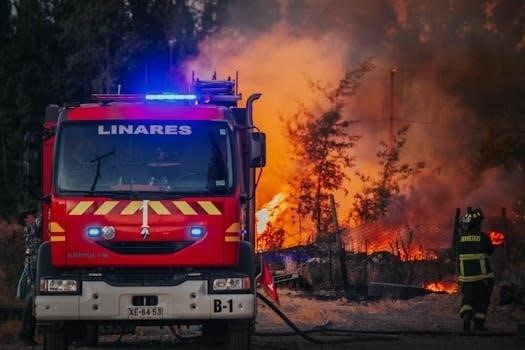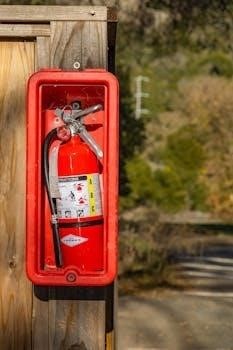Preparing for an NCO board requires a solid understanding of key Army publications. The questions often revolve around the NCO guide, FM 7-22.7. Expect questions about the NCO history, doctrine, leadership, and training principles. This section focuses on the types of questions you can expect during the board.
FM 7-22.7 and the NCO Guide
FM 7-22.7, the Noncommissioned Officer Guide, is a cornerstone document for any NCO aspiring to advance. This publication serves as a comprehensive resource detailing the history, roles, and responsibilities of the NCO corps. A thorough understanding of FM 7-22.7 is crucial for success in any board. Expect board members to ask questions about the publication’s purpose, key content, and its significance to the Army. Familiarity with the introduction by CSM Gary Litrell, a Medal of Honor recipient, can also prove beneficial. The guide covers the evolution of the NCO, highlighting key figures and events that shaped the modern NCO corps. Knowledge of the guide demonstrates a commitment to the NCO profession and its values. Board members will assess your understanding of the NCO’s role as a leader, trainer, and mentor. Therefore, studying FM 7-22.7 is not just a preparation exercise; it reflects a dedication to professional development.
Key Content of FM 7-22.7
FM 7-22.7 delves into the core principles and responsibilities of the Noncommissioned Officer. The publication emphasizes the NCO’s role as a leader, trainer, and advisor. It explores the historical context of the NCO corps, showcasing the evolution of leadership styles and duties. Key areas covered include the NCO’s responsibilities in training, discipline, and mentorship. The guide also outlines the professional development opportunities available to NCOs. Understanding the NCO’s role in the Army’s operational environment is crucial. FM 7-22.7 highlights the importance of the NCO in maintaining standards and fostering a positive command climate. It emphasizes the NCO’s function in implementing the commander’s intent and ensuring mission accomplishment. Familiarity with the guide demonstrates a commitment to the NCO creed and its core values. This knowledge is essential for NCOs at all levels, from junior leaders to senior advisors. The content reinforces the importance of the NCO’s role in the success of the Army.
History of the NCO as Covered in FM
FM 7-22.7 dedicates a significant portion to the history of the Noncommissioned Officer, tracing its origins and development. The publication highlights the evolution of NCO roles from the early days of the Army to the present. It examines the contributions of key figures and events that shaped the NCO corps. Understanding this history provides valuable context for the NCO’s current responsibilities and leadership expectations. The manual explores the different ranks and their respective duties throughout history. It emphasizes the consistent importance of the NCO as the backbone of the Army. The historical context underscores the dedication, professionalism, and adaptability of the NCO corps. It showcases how NCOs have consistently adapted to changing operational environments. The historical narrative in FM 7-22.7 reinforces the unique heritage of the NCO and the importance of carrying on that legacy. Knowing this history allows NCOs to better understand their place within the Army’s traditions. This understanding fosters a deeper appreciation for their service.

Common Areas of Questioning in Army Boards
Army boards typically focus on several core areas when questioning candidates. Expect questions concerning Army leadership doctrine, as outlined in ADP 6-22. Understanding leadership principles, attributes, and competencies is crucial. Questions about training and development, based on ADP 7-0, are also frequent. Familiarity with the operational process, covered in ADP 5-0, is essential. You should be prepared to discuss the military decision-making process (MDMP) and troop-leading procedures (TLP). The board will assess your knowledge of Unified Land Operations, found in ADP 3-0. Expect questions on operational and mission variables as well. Questions on the Army’s history, the NCO corps, and key military figures are also common. Additionally, boards may explore your understanding of current events and their impact on the Army. Be ready to discuss ethical considerations and how to handle challenging situations. Your knowledge of resources and study guides will also be assessed. The goal of these questions is to evaluate your overall competence as a leader.
Overlap Between Promotion and Competitive Boards
There’s significant overlap between promotion boards and competitive boards in the Army, especially regarding the types of questions asked. Both types of boards assess a soldier’s knowledge of core Army doctrine, leadership principles, and operational concepts. Questions regarding FM 7-22.7, the NCO guide, are common in both settings. Expect similar inquiries about Army leadership, training, and the operational process. Knowledge of MDMP and TLP is essential for both. The emphasis on Unified Land Operations and the related variables remains consistent. Questions about military history and key figures can be expected in either board. The focus on ethical decision-making and handling difficult situations is also shared. Both types of boards seek to identify candidates who possess the knowledge, skills, and leadership qualities necessary for advancement; Therefore, preparation strategies can be quite similar, leveraging the same study materials and resources. The core difference lies in the level of competition and the specific criteria being evaluated.
NCO Evaluation and Bias
NCO evaluations are crucial for career progression, but the potential for bias exists, which can affect fairness. An NCO might receive an evaluation that they perceive as biased or unfair, creating a challenging situation. Understanding how to address biased evaluations is essential for both the NCO being evaluated and leaders involved. Addressing these concerns requires open communication and adherence to regulations. It’s important to understand the evaluation system and identify potential areas of bias. Senior leaders play a vital role in ensuring fairness and objectivity in the evaluation process. NCOs should familiarize themselves with the procedures for disputing evaluations if they feel they have been unfairly assessed. Early intervention and clear communication can help mitigate the impact of bias. Furthermore, leaders must be aware of their own biases and strive to conduct evaluations objectively and transparently. Addressing bias is essential for maintaining trust and promoting a healthy environment.

Addressing Biased Evaluations
When faced with a potentially biased evaluation, NCOs have avenues for recourse. The first step involves open communication with the rating official to discuss specific concerns. Documenting instances of perceived bias is critical, including dates, times, and specific examples. If direct communication does not resolve the issue, NCOs can utilize the chain of command to seek further review. Formal appeals may be necessary if the bias remains unaddressed. Understanding the regulations and procedures for appealing an evaluation is paramount. Seeking advice from mentors or senior NCOs can be beneficial. It’s crucial to maintain professionalism and focus on factual information when addressing a biased evaluation. Remember that the goal is to ensure fairness and accuracy in the evaluation process. Persistence and a focus on facts are key. A fair evaluation system is vital for the professional growth of all NCOs.
Study Guides and Resources
Effective preparation for NCO boards necessitates utilizing a variety of study guides and resources. These materials offer a framework for understanding the breadth of knowledge expected. Many units provide basic study guides, but Soldiers can also find comprehensive resources through the PX. Online platforms, such as the U.S. Army Board Study Guide (armystudyguide.com), offer free and extensive study materials covering various topics. Quizlet is another valuable resource for flashcards and interactive learning. These guides usually contain sample questions and answers, focusing on leadership, training, operations, and Army doctrine. Remember that these guides are not exhaustive and should be used as a starting point for further exploration. Successful preparation involves actively engaging with study materials and understanding the concepts behind the questions. Combining different resources can lead to a deeper understanding of the material and improve your confidence.
Availability of Study Guides
Accessing the right study guides is crucial for NCO board preparation. Many units provide their own basic study guides tailored to specific requirements. These are often a good starting point, offering foundational knowledge. Soldiers can purchase more detailed guides at the Post Exchange (PX), providing a broader range of information. Furthermore, numerous online resources are readily available. Websites like the U.S. Army Board Study Guide offer free, comprehensive materials. These digital platforms often include practice questions, flashcards, and detailed explanations. Utilizing these resources can significantly enhance understanding of the material. It is important to explore both unit-specific and external resources for a well-rounded approach. The combination of printed and online materials will maximize preparation effectiveness. Therefore, actively seeking out available study guides is an essential step in board preparation, ensuring thoroughness and confidence.
Online Study Resources
The digital age provides a wealth of online study resources for NCO board preparation. Many websites offer comprehensive guides, practice questions, and flashcards. Platforms like Quizlet allow for interactive learning and memorization of key terms. The U.S. Army Board Study Guide is a notable free resource offering extensive coverage of relevant topics. Additionally, several websites compile board questions and answers, aiding in understanding the types of questions you might encounter. Some sites focus on specific aspects like leadership, training, and operations, allowing for targeted study. It’s beneficial to download study apps for on-the-go access. Using a variety of online tools can enhance comprehension and retention, creating a flexible and effective study experience. These resources enable soldiers to prepare thoroughly from anywhere, anytime. Exploring and utilizing these online options is crucial for maximizing study effectiveness and confidence for the board.
The U.S Army Board Study Guide

The U.S. Army Board Study Guide, often found online, serves as a comprehensive resource for soldiers preparing for promotion and competition boards. This guide is typically free and offers a wide range of study materials, including practice questions, key concepts, and explanations of Army doctrine. It often includes sections on leadership, training, and operational processes, aligning with the typical topics covered in board examinations. The guide may also feature insights into the history of the NCO corps, helping candidates understand the traditions and values of the noncommissioned officer. This resource is designed to be accessible, allowing soldiers to study at their own pace and focus on areas where they need additional help. The study guide is a valuable tool for any NCO seeking to enhance their knowledge and improve their chances of success in the board process. Utilizing this resource can significantly boost confidence and readiness.
Leadership and Training Principles
Understanding Army leadership and training principles is crucial for success in NCO boards. Questions in this area will assess your knowledge of how to effectively lead soldiers and conduct training. Expect questions about the Army Leadership Requirements Model, which focuses on attributes like character, presence, and intellect, and competencies like leading, developing, and achieving. You should also be prepared to discuss the principles of unit training, which include the responsibilities of commanders and NCOs, training to standard, and training as you will fight. The board will also test your understanding of the operations process⁚ plan, prepare, execute, and assess as it applies to unit training and leader development. Demonstrating proficiency in these areas is essential for showing your readiness to serve at the next level. The board aims to ensure you are equipped to lead and train effectively.
Army Leadership Doctrine
A firm grasp of Army leadership doctrine is vital for any NCO aspiring to advance. This section delves into the key concepts outlined in ADP 6-22, the Army’s keystone publication on leadership. Expect questions regarding the definition of leadership itself, emphasizing the importance of purpose, direction, and motivation. You will need to understand the role of an Army leader and the significance of influencing others to achieve organizational goals. The board may also assess your knowledge of how leaders can mitigate resistance, and the concept of command authority. Furthermore, be ready to discuss mission command, which empowers agile and adaptive leaders. Questions may arise about the Leadership Requirements Model, focusing on leader attributes and competencies, and the three categories of leads, develops, and achieves. Understanding these principles is paramount for demonstrating effective leadership.
Training and Development Principles
Understanding the Army’s approach to training and development is crucial for NCO board success. This section explores the core principles outlined in relevant Army doctrine, specifically ADP/ADRP 7-0. Expect questions on who is responsible for training units and developing leaders, primarily commanders, and the different domains of training⁚ institutional, operational, and self-development. You should be familiar with the Army’s principles of unit training, such as training to standard, training as you fight, and training fundamentals first. Be prepared to discuss the unit’s Mission Essential Task List (METL) and its importance in focusing training efforts. Questions on the operational processes – plan, prepare, execute, and assess – as they apply to training may also be included. Demonstrating a comprehensive understanding of these principles is essential for any NCO aspiring to leadership roles.

Operational Processes and Unified Land Operations
A strong grasp of operational processes and Unified Land Operations is vital for NCOs. This section delves into key concepts from ADP/ADRP 3-0 and 5-0. Expect questions on the characteristics of Army operations⁚ flexibility, integration, lethality, adaptability, depth, and synchronization. You should understand the operational variables (PMESII-PT) and mission variables (METT-TC) and how they influence operations. Be prepared to discuss the Army’s warfighting doctrine, Unified Land Operations, and how the Army seizes, retains, and exploits the initiative. The section might also cover the levels of war⁚ campaigns, operations, and tactical actions, as well as the definition of operational art. Questions about the Military Decision-Making Process (MDMP) and Troop Leading Procedures (TLP) are also likely. A thorough understanding of these elements demonstrates your ability to plan and execute successful operations.






